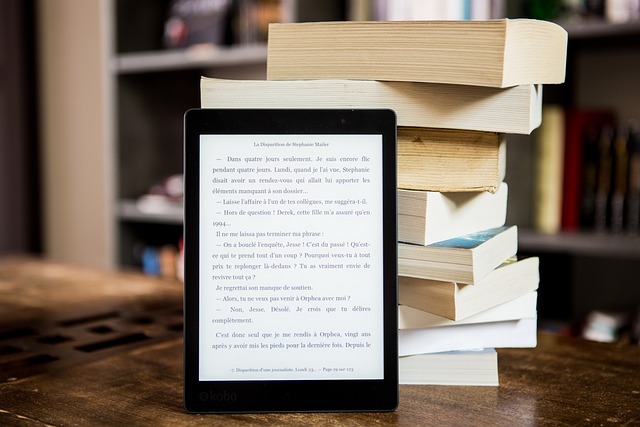For the month of May, my blog posts will be centered on self-publishing to promote my updated eBook Self-Publishing Success: How to Successfully Write, Publish, and Promote Your Book. If you are an aspiring new author and was interested in self-publishing your manuscript, then you have come to the right place. This post will answer the top six common questions about self-publishing.
What is Self-Publishing?
Self-publishing is the process of writing, editing, proofreading, cover design, formatting, printing, and book marketing by an author without the help of a traditional publishing company. The author uses their own resources to complete the entire process of self-publishing their work.
How does Self-Publishing Work?
The self-publishing process consists of the following 6 steps: writing, editing and proofreading, formatting, cover design, publishing, and promoting your book.
Step 1: Writing
Self-publishing starts with coming up with a profitable idea for your book. If you want to make money from your writing, then you should start with thinking of a topic for your book that your audience would be willing to buy. The best way to do this is by checking Amazon’s best seller’s list for the bestselling titles that your customers are buying.
Once you have developed an idea for your book, you need to start writing it. Create an outline, do your research, and consider how many words you want to write, if your book will include pictures, and whether you want to publish it as an eBook, paperback, or hardback.

Step 2: Editing and Proofreading
The next step in the self-publishing process is to edit and proofread your manuscript. People tend to use these terms interchangeably, but they both have different meanings. Proofreading involves checking and correcting spelling, punctuation, and grammatical errors.
Editing, on the other hand, goes much deeper and it involves checking the overall quality of your work. It ensures that your writing is the best that it can possibly be. Editing makes sure that you convey the meaning and idea of your work in the best way. With editing, you may change the sentence structure, and use more appropriate words to express yourself through your writing more effectively. Editing also involves checking facts to make sure that they are accurate.
Step 3: Formatting
You need to decide which format you are going to use to publish your book. Is it going to be in print format, hardcover, or eBook? Depending on which one you choose, you will have to format your book in such a way as to meet the requirements of the publishing platform you are using to publish your work.
For example, if you choose to publish your book as a paperback, you will need to set the trim size, bleed, and margins of your book.
The trim size is the width and height of your book. The bleed is when a picture reaches all the way to the edge of the page. Margins are like borders that protect your content from running off the page and being cut off during the printing process.
Some publishing platforms allow you to save your work as a Word document or as a PDF.
Step 4: Cover Design
Choosing the right cover design depends on how you wish to publish your manuscript. You also have to follow the guidelines on how to design your cover so that it won’t be rejected when the time comes to upload your work. There are different requirements for designing a paperback cover, an eBook cover, and a hardback cover.
For a paperback cover, for example, you will need to design the front cover, back cover, and spine. If you decide to design the cover yourself, some publishing platforms may require you to save it as a PDF for it to be accepted.

Step 5: Publishing
For you to publish your work, you will require a publishing company or platform to help you to do that. There are many companies that you can use to self-publish your book, but the two best publishing platforms, in my opinion, are Kindle Direct Publishing and Draft2Digital.
It is very easy to use these platforms and they are both free. Kindle Direct Publishing offers book templates, a free cover creator tool to design the book cover, and software called Kindle Create to help you format your manuscript.
Draft2Digital, on the other hand, simply allows you to upload your Word document and they format it for you. Draft2Digital also offers eBook templates that you can use to format your work.
Step 6: Promoting Your Book
This final step can be very challenging for new as well as established authors. Once your book is published and available in the online marketplace, you will need to market and promote your book so that people will buy it. There are many different ways you can promote your book. You can use social media, make a book trailer and upload it to YouTube, or submit your book to book promotion sites.

What are the Pros and Cons of Self-Publishing?
When you finish your first book, you may be considering whether to use a traditional publisher or try self-publishing. Before you make that decision, you may want to consider the pros and cons of self-publishing, compared to traditional publishing.
Advantages of Self-Publishing
You have full creative control. You are in control of the content, format, and design of your book. On the other hand, if you decided to go the traditional publishing route, the publisher would have the final say on how your book is designed and formatted. They may also have control of choosing the title of your book. If you want to have full creative control of your book, then self-publishing maybe your best option.
Self-publishing offers higher royalty rates. If you decide to self-publish your book, you may get paid up to 70% in royalties for the book. In traditional publishing, however, you may only be offered between 7 and 25% in royalties. Therefore, you have the potential to earn a lot more money self-publishing your book than going with a traditional publisher who will pay you less.
With self-publishing, the waiting time is a lot shorter. After all the hard work you put into writing your book, I’m sure you are very excited about seeing it displayed for sale in many online marketplaces. For a digital book to be published it may take up to 24 hours. A printed book may take up to 72 hours for it to be published. With traditional publishing, on the other hand, it may take up to a year to see your book online and in bookstores.
Self-publishing helps you to get noticed. As a first-time writer, it may be hard to grab the attention of publishers, but if you self-publish your book, you will be able to attract new readers and build your email list. Once publishers see how successful you were in publishing your first book, you may get offered a contract with a traditional publisher in the future.

Disadvantages of Self-Publishing
You have read about the advantages of self-publishing, now we look at the drawbacks.
It’s hard to grab the attention of your readers. When you self-publish a book, it is your responsibility to promote and distribute your book. It’s very hard to do that when you are a first-time writer and no one knows who you are. It is harder to get your book to become a best-seller through self-publishing. You will need to announce your book on social media, advertise on book retail sites, and get your book featured on book promotion sites and book blogs to gain visibility.
Self-publishing a book can be very expensive. Unlike having a traditional publisher to back you up, you will have to use your own resources to pay for things like editing, formatting, cover design, printing, and marketing. Unfortunately, self-publishers will not earn back the money they spent on producing their book until it starts to generate sales.
Unlike traditional publishing, as a self-publisher, you will have to pay for professional services. If you’re with a traditional publisher, you get the full support of their staff of proofreaders, editors, designers, and publicists. The traditional publisher will be able to get your book into bookstores, arrange book signing events, and get editorial reviews for your book. As a self-publisher, however, you are on your own. Everything that goes into publishing a book rests on the shoulders of the author, which can be very time-consuming as these things can take time away from your writing.
As a self-published author, it will be very difficult to convince physical bookstores to sell your book. Traditional publishers have a good relationship with physical bookstores and they have a good distribution network. They can offer a book returns option which makes bookstores more willing to stock your book. However, as a self-publisher, bookstores will not be willing to stock your book if you cannot accept book returns. Many new self-publishers tend to use the free ISBN number offered by publishing platforms such as Amazon and Draft2Digital which physical bookstores will not accept.
Which Self-Publishing Companies Should You Avoid?
As a new author, it can be very tempting to pay for publishing services that make promises of best-seller status or guarantees of selling a high number of books. But these are the type of publishing companies that authors need to avoid so that they don’t get scammed out of their hard-earned cash.
Other shady publishers to look out for are the ones that charge a fee to read your book, that has contracts that make authors sign away the rights to their book, and those that require you to purchase copies of your book.
READ MORE: Self-Publishing Companies to Avoid and How to Spot Them
Where Should You Self-Publish Your Book?
There are many companies that provide a self-publishing platform to help authors to publish their work. Some offer only digital services in which the author can only publish an eBook, while others offer print on demand (POD) services in which they print both paperback and hardcover books.

These companies offer the author access to a wide customer base and they get paid royalties through the sales of their books. Here are the top 5 self-publishing companies where you should go to self-publish your book:
Amazon Kindle Direct Publishing (KDP)
- Authors have the option to publish their books in eBook, print, or hardcover format.
- It offers print-on-demand (POD) services for your books.
- It offers a free ISBN number for your printed book.
- Authors earn up to 70% in royalties per sale of each book.
- It also offers enrolment in KDP Select and Kindle Unlimited to promote your book.
- The self-publishing service is free.
Kobo Writing Life (KWL)
- Kobo offers Kobo Writing Life (KWL) self-publishing service.
- Your book will be added to the Kobo catalog within 72 hours after upload.
- You will receive 70% of the list price for each copy of your book that is sold.
- There is no cost to publish your book on Kobo.
Barnes & Noble
- Barnes & Noble is an easy-to-use publishing platform.
- It offers a facility to create marketing campaigns for your books.
- The royalty rate is 65% of books sold.
- Its author services are only available in the following countries: United States, United Kingdom, Canada, France, Belgium, Germany, Netherlands, Australia, and New Zealand.
Apple Books
- The royalty rate is set at 70% per sale of each copy of your book.
- You have to use a Mac laptop to upload books to Apple Books.
- You have to publish your book in ePub format.
- Monetizing your book isn’t easy, but it is free to upload to Apple Books.
- Customers consist of nearly two-thirds of Canadian eBook buyers.
- Apple Books does direct marketing to iPhone and Mac users.
Draft2Digital
- Draft2Digital is a book aggregator that distributes your books to the following distribution channels: Amazon, Scribd, Kobo, Apple Books, Google Play, Bibliotheca, Overdrive, Vivlio, BorrowBox, and more.
- Uploading and formatting your eBook are both free.
- You receive about 60% of the list price of your eBook.
- For print books, the royalty rate is 45% of the list price of your book.
- An ISBN is automatically assigned to your book when it is published through Draft2Digital.

Is Self-Publishing Profitable?
Yes, self-publishing can be profitable but it is not a get-rich-quick scheme. It takes planning, a lot of research, writing a good book, and having a huge marketing campaign so that your book will sell.
If you are passionate about writing and want to generate revenue from your work, then self-publishing may be what you should consider doing. There are four things you can do to help make self-publishing your book profitable:
- Write a really good book. Make sure that you proofread and edit the book before it is published.
- Ensure that you have a professionally designed book cover and an attention-grabbing book blurb.
- Be careful with pricing your book. Set the price low enough to attract interest, but high enough to make a profit. Most eBooks sell between 0.99c and $3.99.
- Create a strong marketing plan for your book. You should start promoting your book before it is published.
READ MORE:



